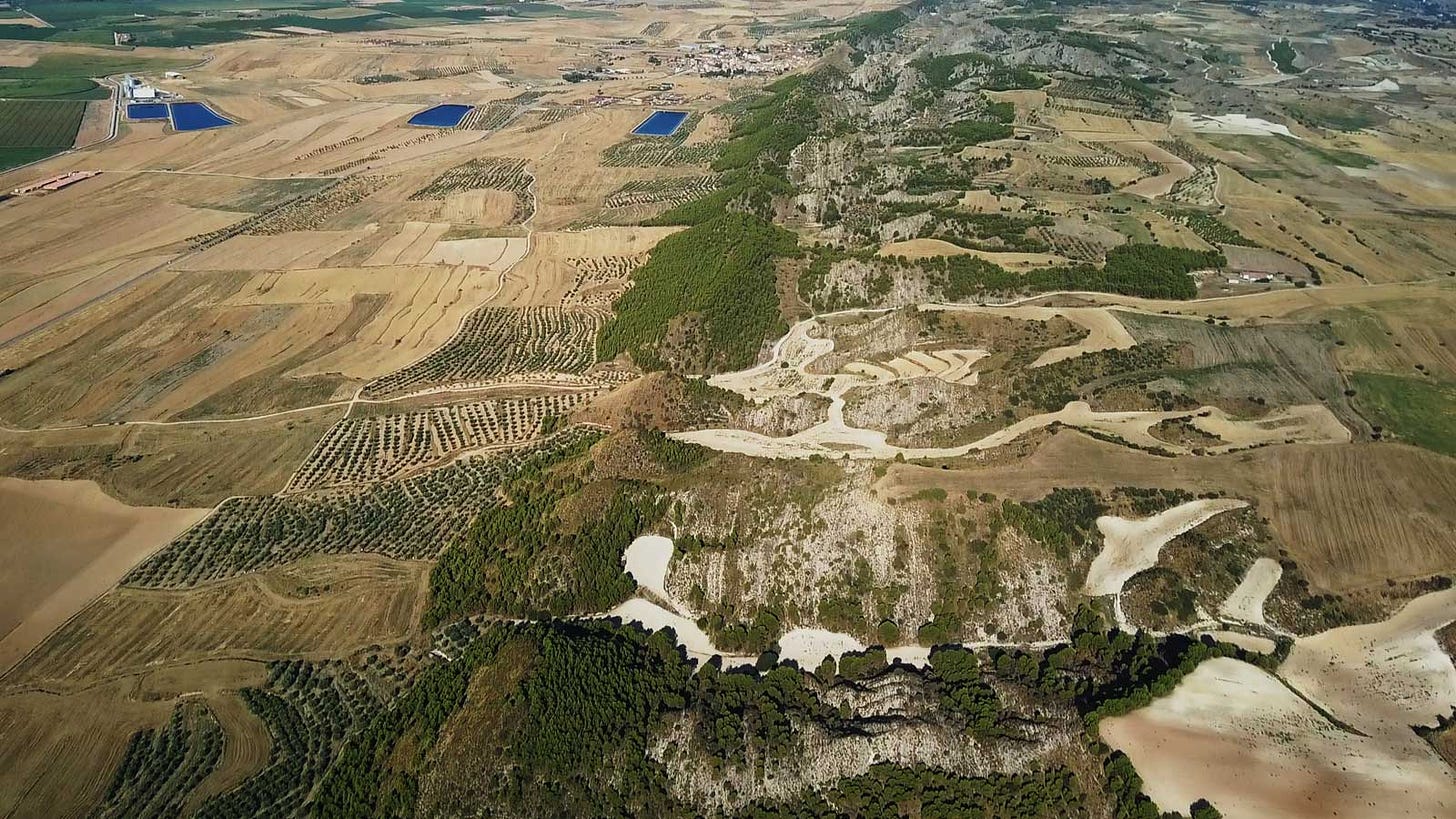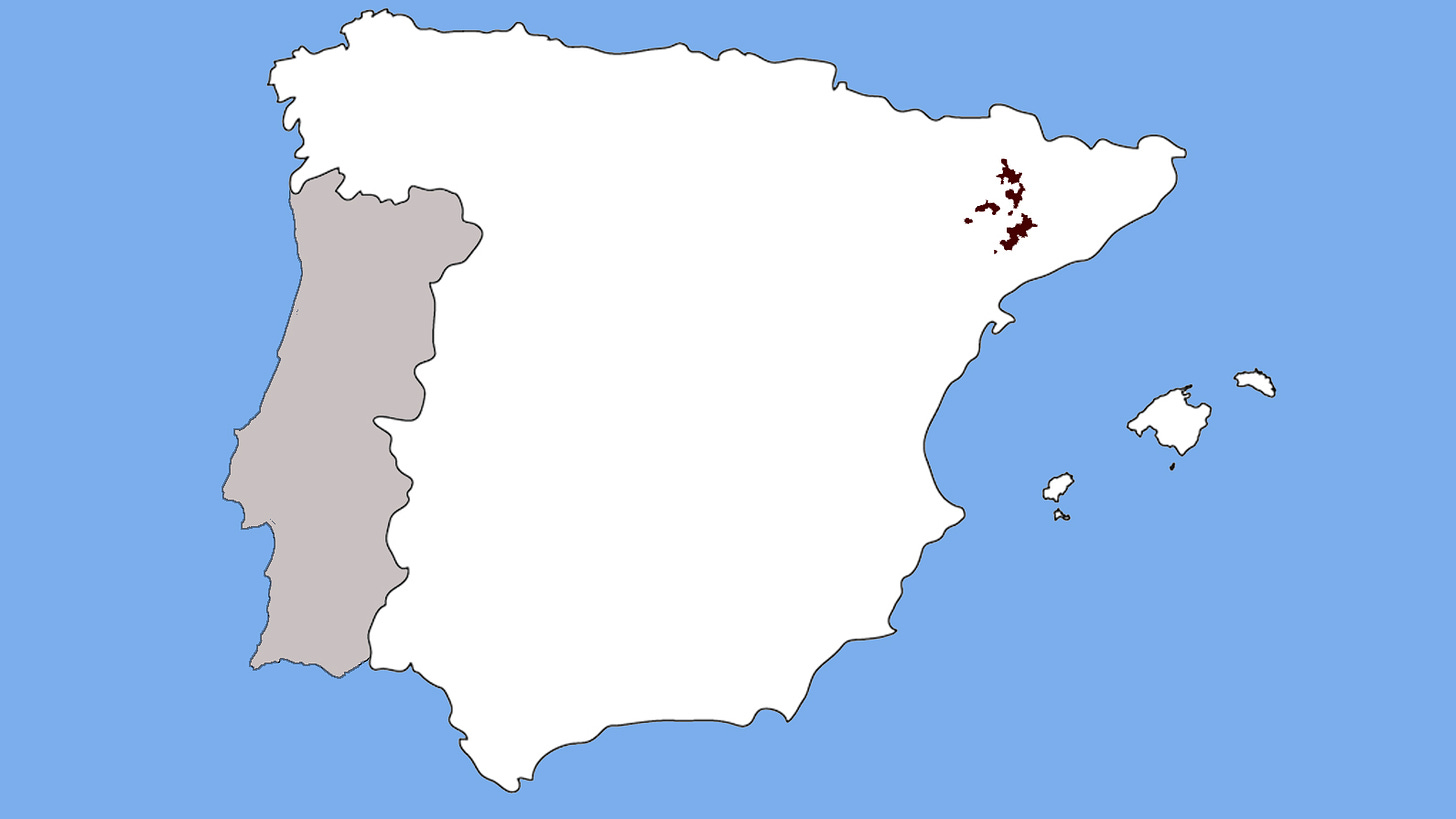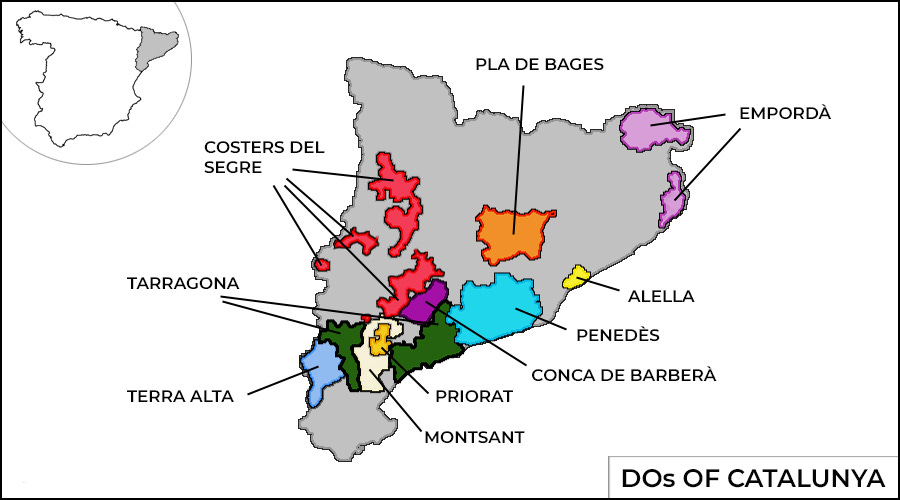DO Costers del Segre
This article was originally published on our old website, Simply Spanish Wine.
The Serra Llarga range runs through the heart of the Costers del Segre wine region.
Key points
Grape varieties: Garnacha, Ull de Llebre (Tempranillo), Cabernet Sauvignon, Monastrell, Trepat, Macabeo, Xarel-lo, Parellada, Chardonnay, Sauvignon Blanc, Moscatel de Alejandría
Hectares planted: 4,700 Ha
Grape growers: 633
Wineries: 36
About Costers del Segre
Denominación de Origen Costers del Segre is one of ten DOs in Catalunya, not including the all-encompassing DO Catalunya whose wines can be made with grapes from all over the region. It covers just under 5,000 hectares of vineyard near the city of Lerida, or Lleida as it’s called in Catalan. Costers del Segre literally translates as "banks of the Segre" which is one of the many tributaries which feed into the Ebro river.
Although it was officially established as a DO in the 1980s, the region won its place on the Spanish wine map thanks to the Raventós family, owners of Cava giant Codorníu, who established the Raimat winery and estate in the area in the early 1900s. The winery remains a major player today, and its vineyards account for about 30% of all the area under vine in the DO.
The geography of Costers del Segre
In geographical terms, Costers del Segre is the most inland of all Catalunya’s DOs, sitting about 100km north-west of Tarragona and the Mediterranean. It is divided up into 6 sub-zones which form an arc to the east of the city of Lleida, with vineyards planted at about 700 metres above sea level in the higher, pre-Pyrennean areas like Artesa de Segre and Pallars, down to 250 metres above sea level in the Segrià sub-zone on the flatter, lower-lying plain around Lleida. The rolling landscape sits primarily on limestone soils with brown topsoil.
Climate in Costers del Segre
The climate is fairly dry is all six of the sub-zones and with all the temperature extremes you would expect in a marked continental DO, with freezing winters and hot, dry summers.
The grapes of Costers del Segre
As elsewhere, the arrival of phylloxera in the province of Lleida in the 1890s had a huge impact on vineyard production. A lot of the more traditional varieties like Samsó (Cariñena) or Sumoll, which is native to Catalunya, were badly affected. That created space for the planting of new vines grafted onto phylloxera-resistant American rootstock. Imported varieties like Cabernet Sauvignon, Merlot, Pinot Noir or Chardonnay began to do well and are in common use today. But you'll still find native varieties like Tempranillo, Parellada or Macabeo.
Summary
If you want to avoid the crowds, inland Catalunya can be a great place to explore, and Costers del Segre proves it’s not just about the meccas of Priorat, Terra Alta, and Montsant in the south of the region. With its varied landscape, Mediterranean climate, and the historic Lleida at its heart, this is a lesser-known wine region that is well worth discovering.








